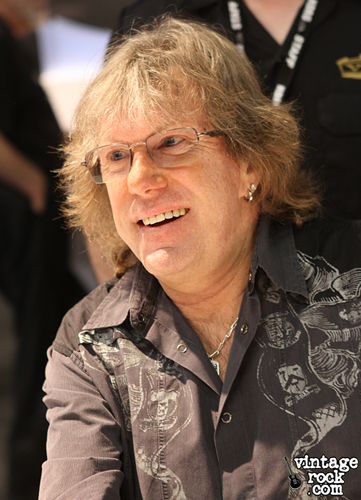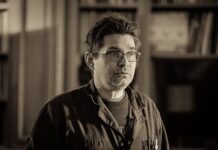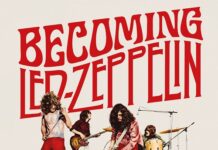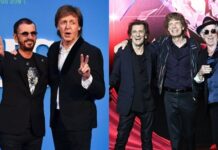By Shawn Perry
Unofficial Tribute: The Show’s About To Begin
I don’t believe I’ll get much argument when I say that 2016 has been a banner year for the passing of some of the world’s most celebrated musical artists. And it’s only June! David Bowie, Glenn Frey, Paul Kantner, Prince, the list goes on like some sort of unilateral epidemic. For me personally, however, the one that really hit home was Keith Emerson, who seemingly ended his own life because he felt he could no longer play the keyboards at a level that once placed him at the top of the mountain. Tragic is one word that springs to mind.
He was unquestionably, at his peak, the Jimi Hendrix of keyboards — to many, including myself, one of the greatest ivory ticklers to ever walk the earth. But nerve damage to his fingers (an ongoing issue for years), in his 70s and no longer the whiz kid of the 1970s, scheduled shows in Japan with massive expectations — it has been speculated that all these factors and a livelong bout of depression rattled Keith Emerson enough to shuffle off this mortal coil of his own accord.
Fair to say, Keith Emerson’s passing affected me as intensely as John Lennon’s. The big difference is that I met Emerson a half dozen times, interviewed him, got his autograph, had my picture taken with him, did everything a good fan boy could do except try to become his roommate. I did speak to his companion Mari Kawaguchi about getting together with her and Keith after some filming we did at Marc Bonilla’s place, but it never materialized.

Not that that would have made a difference. Still, unlike many of the musicians I’ve followed, this was one guy I truly worshiped. And to be honest, now that he’s gone, a small part of me is confused as to how certain creative and successful people — people you’d think were lords of the world in every conceivable way — can become despondent, miserable, hopeless and compelled to end it all.
My love and admiration for the genius of Keith Emerson goes back to April 6, 1974, when Emerson, Lake & Palmer played the biggest show of their career. It was the California Jam, and as a young and impressionable 15-year-old, my concert-going experience was limited, to say the least. But when I heard Deep Purple and Black Sabbath were on the bill, I did everything I could to finagle a ticket and a ride to the Ontario Motor Speedway.
Obviously, there were other bands there I was familiar with like Rare Earth and Black Oak Arkansas. Co-headlining the festival was Emerson, Lake & Palmer, a band I’d never even heard of. I assumed, because their combined surnames was their moniker, that they were a popular “mellow” group along the lines of Crosby, Stills & Nash or Hamilton, Joe Frank & Reynolds. I couldn’t have been more wrong.
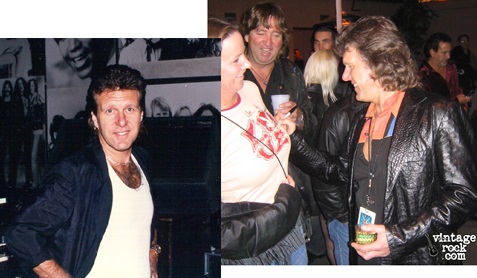
After Deep Purple played, I didn’t think anyone could top what turned out to be literally an explosive performance. Then ELP came on, and my limited musical vocabulary got a square kick in the yarbles. There were a few mellow moments, like when Greg Lake played “Lucky Man,” but that didn’t affect my enthusiasm as I stood some 100 yards away and marveled at what unfolded before me. I had a hard time making out Emerson as he twirled on a piano during “Pictures At An Exhibition,” but I could definitely relate to the whole spectacle that surrounded it. At its core, it was the quadraphonic finale of “Karn Evil 9, Third Impression” that got me to the record store seeking out Brain Salad Surgery a few days later.
From there, I gobbled up the back catalog, Nice records, King Crimson records, most anything Keith Emerson, Greg Lake and Carl Palmer left their mark on. Ironically, just as I was getting into ELP, they decided to take an extended break and wouldn’t return with an album or tour until 1977. Unbeknownst to me and ELP fans worldwide, the Works albums and tour would have an unsettling impact on the group’s future. The shows were still stellar (I saw three of them), and the Works albums (there were two volumes) had some spectacular songs (“Pirates” remains one of my favorites). Unfortunately, lackluster sales and the expense of taking an orchestra on the road nearly broke the band. Once punk started moving in, not even the last gasp of Love Beach, their final album of the 1970s, could save ELP.
After the band folded, Keith Emerson dabbled with soundtrack work and a few under-the-radar solo efforts. I recall an interview he did with Jim Ladd at the time where he said he still spoke to Lake and Palmer, but felt he’d taken the concept of a three-piece as far as it could go. Of course, as it has happened for practically every other notable band that has broken up, a reunion was inevitable. In the 1980s, Palmer was enjoying success with Asia, so Emerson and Lake recruited Cozy Powell for a self-titled album that still gets the occasional spin on my CD player. I caught a couple shows on their one and only tour. Afterwards, Emerson and Palmer regrouped and formed the band 3 with Robert Berry. They made an album, charted a single and toured, but it didn’t go any further than that.

When the 1990s came along, Emerson, Lake & Palmer reformed for two more albums and another six years of solid touring. I was there for four shows, including their final U.S. appearance together in San Diego. After that, I wasn’t sure if I’d ever see the band or its members again. By then, I had launched VintageRock.com and ELP was a subject I wrote about repeatedly. In my wildest dreams, I could have never imagined interviewing Keith Emerson, Greg Lake and Carl Palmer, even though it actually happened. Emerson was the most elusive, but after multiple emails, he agreed to a phone call.
At the time of our chat, Emerson was putting the finishing touches on an album he was recording with guitarist Marc Bonilla. He told me it was going to be a bit of a throwback with gobs of melody. There was definitely a buzz about it, and he was excited at the prospect of promoting it on the Internet. I asked a lot of questions about ELP, and at one point, came close to losing my composure as I searched for a way to tell him how much his music meant to me. In 2012, when we spoke face-to-face at Marc Bonilla’s, I managed to thank him for everything he had done. He smiled and said he was heading over to Starbucks.
There were a couple other encounters at the NAMM Show, which Emerson regularly attended. I also saw him play twice — once sitting in with a band in Beverly Hills, and then one last time with Greg Lake at the Orpheum Theatre in Los Angeles. It’s a shame he never toured the States to promote the Keith Emerson Band Featuring Marc Bonilla CD because a live performance video shot in Moscow showed the master could still play with passion and precision, though his days of manhandling a Hammond were long gone. Any hope of seeing or talking with him again came to an end on March 10, 2016.
Official Tribute: The Show That Never Ends

It’s almost obligatory that when someone of great prominence passes away, fans, friends and family members gather to pay tribute. When it came to Keith Emerson, there was no shortage of praise from the music community. So it wasn’t too surprising when two tribute shows were announced by musicians who had worked very closely with the keyboardist.
Carl Palmer put a tribute together for June 24 in Miami and has former Genesis guitarist Steve Hackett and Vanilla Fudge keyboardist Mark Stein on the bill. Marc Bonilla’s “official” tribute on May 28 at the El Rey Theatre in Los Angeles, which I attended, featured a fleet of contemporaries and admirers. The only other tribute concert I can think of that truly captured the essence of the artist being honored as well was the 2002 show held at London’s Royal Albert Hall for George Harrison.
It was a truly magical evening, highlighted by some of the world’s most innovative musicians bringing Emerson’s music to life. Rachel Flowers, blind since birth, played a note-perfect rendition of “The Endless Enigma,” and I found myself in heaven, mouthing the quizzical lyrics. Later, Aaron Emerson stepped up to play an original solo composition, and there wasn’t a dry eye in the house.
You cannot underestimate the impact Emerson had on the Moog synthesizer, so it only made sense that Michelle Moog-Koussa, daughter of inventor Bob Moog, would make an appearance. She said that when Emerson died, she felt a part of her father also died. You could feel the emotion permeating the room every time a close friend or relative came up and expressed their feelings over the man’s loss.

The show had its lighthearted, heart-pumping moments as well. A slideshow on the screens flanking both sides of the stage not only featured photos of Emerson as a young man and member of the Nice and ELP, but also, candid shots with a Moog user manual and a Keyboard For Dummies book, which elicited more than a few giggles. I still can’t figure out where Brian Auger was going with his tales about Emerson, but he got plenty of laughs before ripping through what he called “Fanfare For A Common Blue Turkey.” No one was really prepared for the countrified licks guitarists Bonilla, Mike Wallace (Dragon Choir) and Jeff “Skunk” Baxter (Doobie Brothers, Steely Dan) traded during “Hoedown.” The audience ate it all up.
There were plenty of keyboardists on hand, eager to take a stab (without the knives) at Emerson’s most captivating pieces. Toto’s Steve Porcaro cranked out the signature line that drives “Touch & Go.” CJ Vanston (Spinal Tap) brilliantly interpreted “Take A Pebble.” Eddie Jobson (UK, Roxy Music) tackled “Bitches Crystal” and later came up to play the ground-shaking synth solo on “Lucky Man.” Dream Theater’s Jordan Ruddess, whom Bonilla mistakenly introduced as “Jonathan,” took on “Tarkus” and added his own tones and textures to keep everyone guessing. Ed Roth (Boy’s Club), Jonathan Sindelman (Alan White Band), Kae Matsumoto, and Philippe Saisse each brought their handiwork to the table.
Without Carl Palmer and Greg Lake involved, the drum and bass roles were more than adequately filled. Gregg Bissonette (Ringo Starr, David Lee Roth), Troy Luccketta (Tesla), Joe Travers (Zappa Plays Zappa) and Vinnie Colaiuta (Sting, Jeff Beck) all pounded the skins for a song or two (Travers even played a solo on “Tank”). Bassists Mick Mahan (Pat Benatar) and Travis Davis (Keith Emerson Band) switched back and forth to steady the bottom end.
The grand finale of “Fanfare For The Common Man” brought conductor Terje Mikkelsen (who teamed up with Emerson and Bonilla for Three Fates Project) and a small brass section to the stage to recreate the epic Aaron Copland piece as close to ELP’s version as possible. With Jobson, Colaiuta and Toto guitarist Steve Lukather in the mix, it certainly capped off an incredible night of music.

Charles Darwin once said, “A man’s friendships are one of the best measures of his worth.” This certainly speaks volumes about the many friendships Keith Emerson cultivated during his lifetime. After the show, I reached out to a few of these friends who performed at the tribute, and they seemed to agree it was a special night.
Marc Bonilla: “The show had a life of its own. I have never seen so much good will and camaraderie, both on stage and off this past week. There was never any indication of friction or inflated egos. These artists were the most humble, gifted, and inspirational musicians I’ve ever had the pleasure to know. And the same with the support crew. They were undaunted in their pursuit for perfection. This show would not have been possible without the collective efforts of every single person who was involved. I really do believe we made musical history, all thanks to Keith Emerson and his profound influence and effect on us all. It was the unifying factor.”
Mike Wallace: “From my perspective, the tribute was a beautiful gathering of some of the world’s most accomplished musicians, each and collectively paying their respect to the man that brought us music that has influenced each and everyone of us. Marc Bonilla’s musical direction and hard work in pulling this all together was key to a masterfully executed tribute to our friend Keith Emerson. It was a once-in-a-lifetime opportunity for those in attendance to witness. I am humbled and honored to have been a part of this.”
Steve Porcaro: “It was an emotional night that I was so honored to be a part of. Keith was always a hero to me and will always be, so it felt great to be there with everyone celebrating his music and life.”
The final word comes from Mari Kawaguchi, who stood on the El Rey stage with members of the Emerson family, and thanked everyone for coming to the show and supporting the man she loved. We never got a chance to speak, but she posted a beautiful sentiment on Facebook that more or less sums up the evening: “It was THE best show I ever attended. I’m still buzzing from it, and still in disbelieve that THAT lineup really happened. It was a hard, hard work, and I finally slept more than four hours the day after. But it was completely worth it, and I’d do it over and over again. In fact, it will be a big shame if the Keith Emerson Band does not do more of it. So I think that is going to be my next project.”
The one thing I took away from the “Official” Keith Emerson Tribute Concert was that it was better to celebrate how the man lived instead of dwell on how he died. And now, to paraphrase the lyrics of “The Endless Enigma,” that it’s done, I’ve begun to see the reason why he was here. Simply put, it was an honor and a privilege to experience Keith Emerson in all his glory. To be with other like-minded individuals in paying tribute merely confirmed that his legacy will never die.



